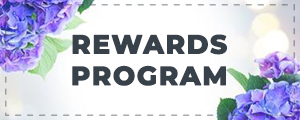| Sorghastrum nutans | USDA Zone: 3-9 |
Indian Grass is primarily grown for its highly ornamental fruit. The coppery-bronze seed heads are carried on showy plumes with dark brown overtones and which fade to gray over time, which are displayed in abundance from early fall to mid winter. It has masses of beautiful panicles of brown flowers held atop the stems in late summer, which are most effective when planted in groupings. Its grassy leaves are bluish-green in colour with hints of silver. As an added bonus, the foliage turns gorgeous shades of yellow and in the fall. The tan stems can be quite attractive.
A clump forming native grass producing tall blue-green blades which turn gold in fall, and retain some color through the winter; light brown, feathery panicles appear above the foliage in late summer, turning copper in fall; an excellent vertical accent.
Indian Grass is recommended for the following landscape applications;
- Vertical Accent
- Mass Planting
- General Garden Use
- Groundcover
- Naturalizing And Woodland Gardens
Native to Ontario
Common Name: Yellow Indian Grass, Wood Grass, Ornamental Grass
|
Key Feature
|
Light Needs | Landscape Uses |
 |
 |
|
|
|
|
| More About Indian Grass |
| Height: 3-8 ft |
Spread: 3 ft |
Colour: Tan Shades |
|
This is a beautiful grass with a somewhat metallic golden sheen to its flowering parts. It is an important associate in the tallgrass prairies and is relished by livestock. It appears to be favored by occasional flooding and repeated burning and sometimes forms nearly pure stands in the lowlands. Warm-season grass with rich gold-and-purple sprays of flowers and seeds in the fall. Warm Season Grasses: These grasses are much slower starting in the spring. They do not push new growth until temperatures warm in early to midsummer. They flower later in the summer or fall with most blooms remaining into the winter. Most warm season grasses tolerate heat, humidity and drought; some even thrive in these conditions. Note that when grown in a container, it may not perform exactly as indicated on the tag - this is to be expected. Also note that when growing plants in outdoor containers and baskets, they may require more frequent waterings than they would in the yard or garden. Be aware that in our climate, most plants cannot be expected to survive the winter if left in containers outdoors, and this plant is no exception. NOTE: Some flowers and plants may be harmful or poisonous to people or pets if touched or ingested. If you require more information before placing an order, please let us know in advance. |









